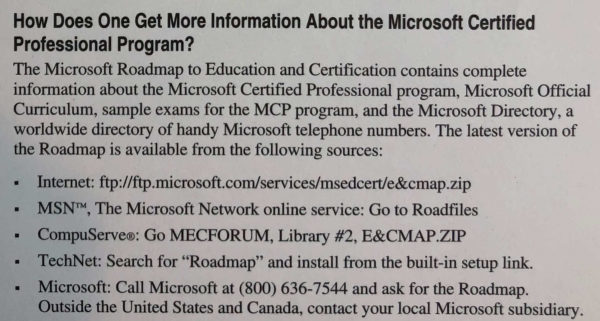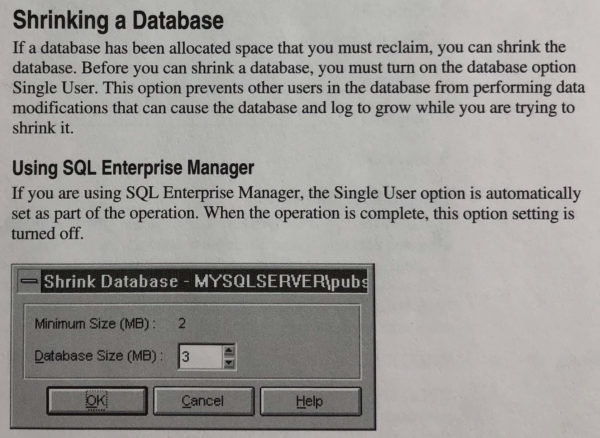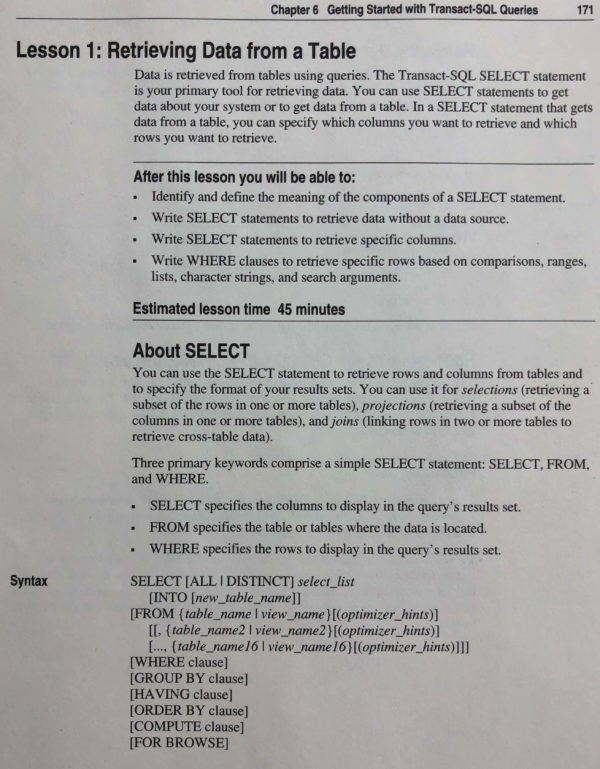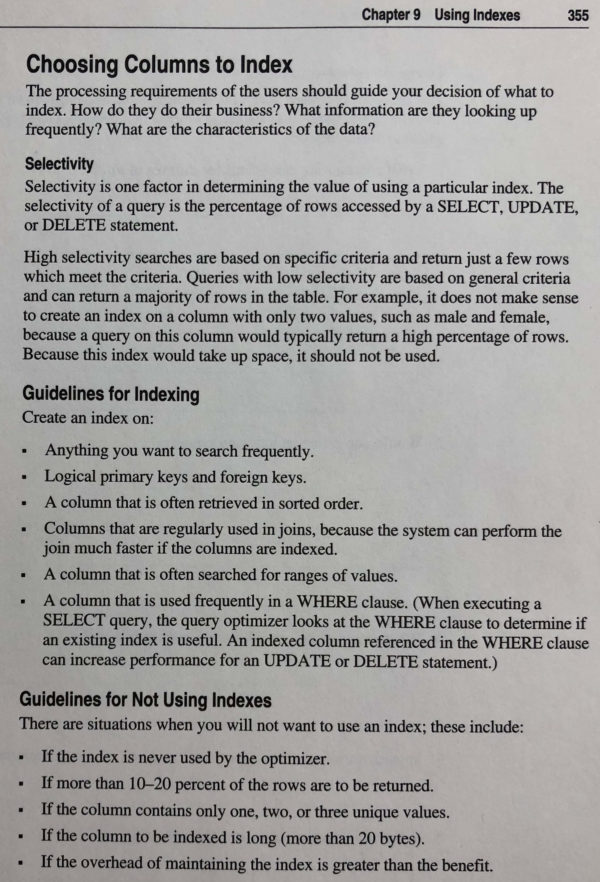Last week, I shared a few pictures out of Ron Soukup’s Inside SQL Server 6.5 book. You had a blast with that one, so I figured I’d share some more pictures from another, uh, let’s call it “well-preserved” book about SQL Server. Make sure you see the subtitle of this book before you add it to your cart.
That’s right: SQL Server 6.5. (And please do NOT pay full price for that. Used ones go on sale all the time.)
Let’s take a trip down memory lane:

“The machine I installed it on is called a personal computer” – today, an Amazon Echo Dot has more memory than that. And frankly, better Internet connectivity options:

Ah yes, The Microsoft Network and CompuServe. I was a Prodigy guy myself – I always saw those CompuServe people as uppity.



Over the years, Microsoft has repeatedly tried smearing buzzwords on the database server box. “Hey, web pages are cool – we can build web pages in the database! Wait, service-oriented architectures are cool – we’ll put a messaging queue in side the database! Document databases? Sure, we’re hip to that!” And with every release, the trendy stuff fades away, and the database engine sticks around, thankfully.

WOW, it used to suck troubleshooting connectivity issues. We take a lot for granted today.




Okay, lemme stop for a second here to let something sink in. This is a 20-year-old book, and it’s by no means the first book to cover the SQL language. But this same technical book, funny as it may be, still uses the exact same language and syntax that you’re using to query databases today.


Reading this book, I was surprised by how much of the information was still relevant today. It might not be accurate anymore, mind you – but it was still relevant. You could pick up this 20-year-old-book, read it cover to cover, and actually be equipped to pass a lot of SQL Server job interviews.
That’s an amazing testament to the quality of the vision of the team that built it, and the staying power of the product.


7 Comments. Leave new
Great article! A trip down memory lane. I remember when we first got SQL 6.5 up, and all celebrated our first connection from a client working. It has stood the test of time for sure.
Ah, that brings back _so_ many memories. I remember how much better SQL 6.x was over SQL 4.21a, but we were definitely spoiled with later releases. I’d completely forgotten about the Devices creation, but I do remember having to write out scripts that would re-create those devices and growth in exact order so you could restore a database.
There was a lot to be said for the lighter-weight separate query tool. It was nice to have something specialized for just running queries, especially on those lower-memory machines.
[[quality of the vision of the team that built it]]
Agreed and might I add even more so in my opinion, we have to thank the genius of Dr. Codd. Without whom we would still likely be working with hierarchical databases using physical pointers.
CompuServe was a great platform for its time. So was SQL 6.5. Liked the ftp reference for download… of course a usable web browser was still a future product. It is amazing to look back at a product like this, realize how much has changed (memory, disk sizes) and how much has stayed the same (TSQL constructs).
Interesting to see that pages used to be 2kB, instead of 8kB. Do you foresee a situation where that will change again, or be user-adjustable?
Zac – well, lemme turn around and ask you: do you have a scenario where changing the page size would get you across the finish line in terms of performance changes? I haven’t seen that personally.
SQL Web Page Wizard….Wow! That’s really interesting. After reading this blog post, I want to play with SQL 6.5. Does anyone know where can i download a legit copy of SQL 6.5? Something like an Enterprise Eval edition may be…Tried BINGOOGLE, But no luck.